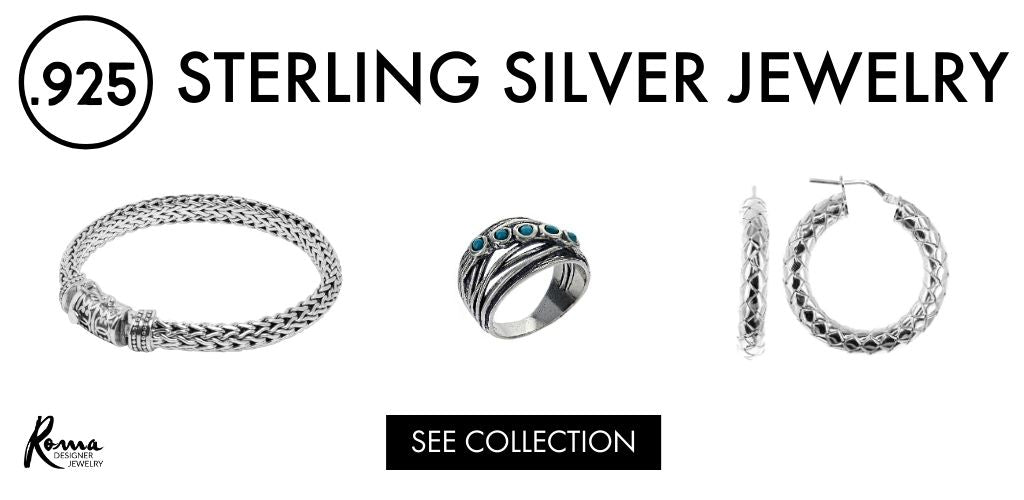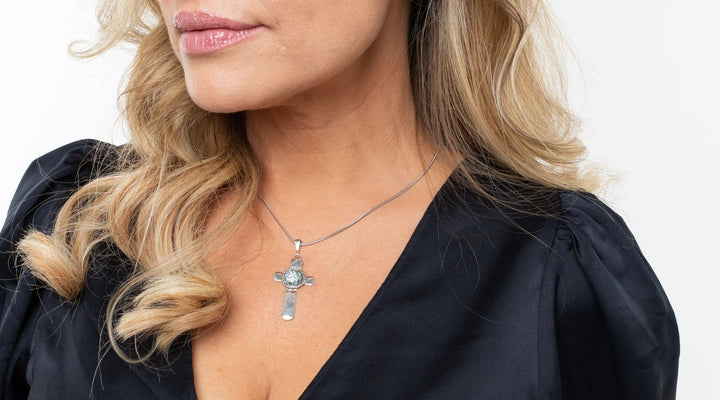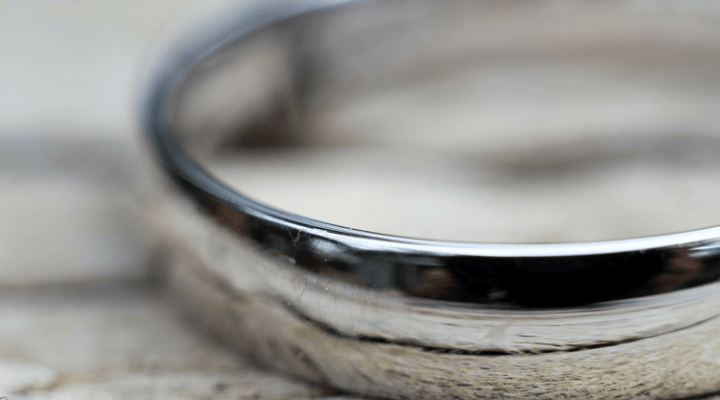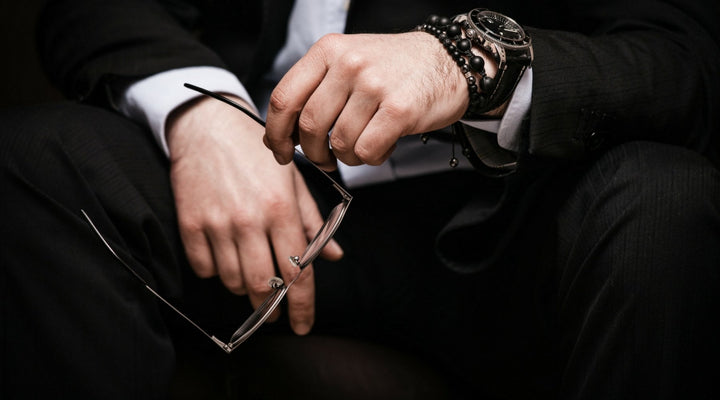Is It Real Silver? Tips to Know If Your Sterling Silver Jewelry Is Real
Make no mistake, almost everything these days can be faked. If you're wondering about your "silver" jewelry or a piece you're planning to buy, you need to read this. Let's talk about real silver jewelry and how to spot fake silver jewelry.
Keyword(s): Primary KW - real silver; Secondary KW - how to tell if silver is real, is sterling silver real silver, how to tell real silver, how to identify silver, fake silver
Did you know that silver is considered a noble metal because it resists corrosion and oxidation in ways that other elements don't?
- Pure Silver: Soft metal that has been adored since the beginning of time. A shiny, sleek element that has been utilized in jewelry, silver coins, utensils, and more.
- Sterling Silver: Most high-quality silver jewelry is actually sterling silver, but don't fret - that's a whopping 92.5% purity at the very least. The remaining 7.5%, typically copper, is there for purposes of durability and strength.
A beautiful pair of stud earrings, sterling silver hoop earrings or a simple ring can be shined to last a lifetime.
So instead of buying cheap jewelry that needs constant replacement, why not splurge on something made with precious metal that's going to last? Spend less time shopping and more time wearing. Less spending and more investing.
This handy guide will help you guarantee that you're getting the real deal when it comes to your silver.
Read on!
Real Silver: How to Tell Pure Silver from Fake
Luckily for us jewelry wearers, there are many ways to tell if the silver item you're purchasing or adorning is authentic. From at-home silver tests, to the look, feel, and smell tests, you'll become an expert at determining silver content and identifying the fakes in no time.
Ensure the quality of your silver item is up to par by using the following tips.
1. Does it have a .925 imprint?
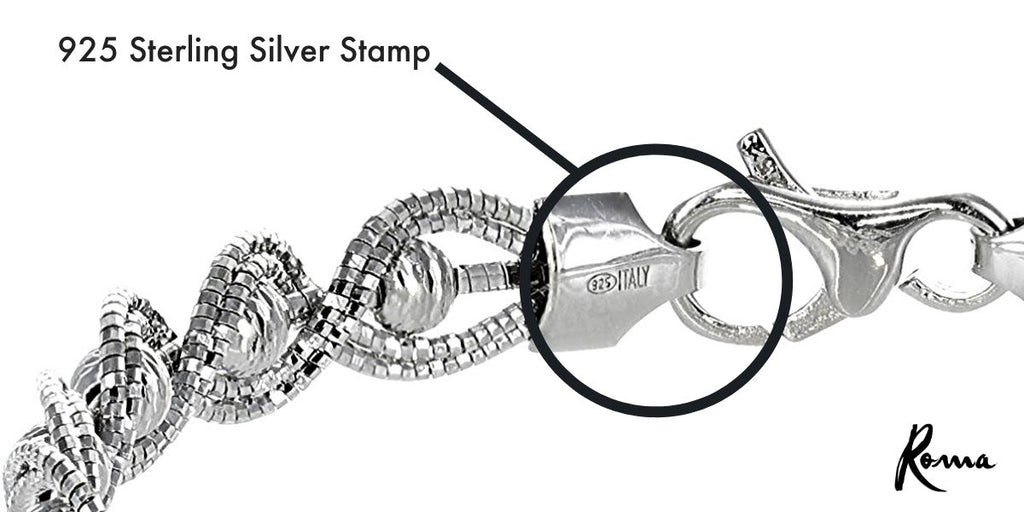 Remember that 92.5% we were talking about earlier?
Remember that 92.5% we were talking about earlier?
Reputable jewelers love imprinting their jewelry with the .925 stamp to let wearers know that it's authentic. You may not have even noticed, because the stamps are usually small and in discreet places.
Check the inside of your silver ring or the underside of a bracelet - or sometimes the side of a clasp. Does it have a teeny tiny .925? Then it's a real one!
Keep in mind that not every piece of real silver will have this marking, but a majority will. It's just one way to tell.
Your jewelry doesn't have a stamp? Keep reading.
2. Does it tarnish?
This is a trick question!
If the answer is yes, that's not exactly a bad thing.
If your sterling silver tarnishes, that's actually a sign that it's real. Fake silver will lose its shine over time, and underneath can be any number of ugly cheap base metals that may turn your skin green. No amount of polishing will return that original shiny tone.
On the contrary, real silver can be polished back to its original, sleek color, no matter how much time has passed. Don't judge jewelry by its tarnish. If you see something with the potential to be beautiful, bring it home and give it a buff.
You may have found a treasure.
Many luxury sterling silver designers are now adding a thick layer of rhodium (platinum family) to the sterling silver to prevent tarnish and preserve the shine.
The Eros Milano of Italy collection features this rhodium finish on every piece.
3. Look, smell, feel
If you don't have the time to visit a professional jeweler, you can perform a number of tests on your unique silver jewelry using something you already have: your senses.
Look: is the outside peeling? Color distorted? Layers of metal?
All signs point to a fake piece of jewelry.
Smell: does it smell funny? Like Sulphur? Unnatural?
Then it's not silver. Silver doesn't have a distinct smell.
Feel: is it bumpy? Scratchy? Generally not smooth?
The material doesn't sound like real silver, then. Is it super sturdy? It could be a different element, as silver is soft and bendable, to a certain extent.
These at-home tests should be enough to check the quality of your silver. But if you want even more assurance, feel free to read on. There's no denying the scientific results of an acid test.
4. The Acid Test
One of the surest ways to tell if your silver is real or not is by performing a simple acid test.
If you have the time, do this at your local jewelry store. They'll do the test on the spot. If you'd rather do it at home, order the proper solution and try it yourself!
Simply put: a drop of acid is placed on the silver in question. If the acid changes color, certain hues indicate whether or not it's fake.
If the acid's color stays the same, you've landed on a true silver piece.
5. The Magnet Test
This test is more about finding out whether what you own is fake.
Did you purchase something thinking it was the real thing, and now you're not so sure?
If your jewelry is connecting to magnetic surfaces, we hate to break it to you: that material just isn't silver. Silver is not noticeably magnetic unlike its friends iron, nickel, cobalt, and the like.
Want to tell if your silver is real or fake on the spot? Bring a little magnet with you on your next market visit and test it right there.
Other Kinds of Silver
Sterling silver is what you're looking for when it comes to jewelry - that quality, nearly 93% stuff.
But let's not underestimate the beauty of its close seconds and thirds. Here are a few other kinds of silver alloys you may come across:
- Mexican silver: 95% silver, 5% copper (used more for currency than jewelry)
- Coin silver: 90% silver, 10% copper (not a typical jewelry material)
- Britannia silver: 95.84% silver!! (that rare beauty)
What are you going to see most?
The answer is definitely sterling silver. Others are rare but occasionally spotted.
Nothing Fake About It
Is sterling silver real? Chances are, you already know the answer to this question. True quality can't be replicated.
Does it look real? Feel smooth? Shine brightly when you polish it? Maintain its original color?
If you answered yes to any of these questions, then congratulations are in order! You own a quality piece of jewelry that you can wear for a lifetime. Real silver should be able to last for centuries, passed down from you to your children, and so on.
For the jewelry connoisseur, fake stuff just doesn't cut it anymore.
FREQUENTLY ASKED QUESTIONS
Q: How Can You Tell if Something is Made of Real Silver?
A: Look for small markings or stamps on the silver item. Genuine silver will be stamped with .925 (sterling silver), 900, or 800. Most genuine silver jewelry will me marked with 925.
Q: What if There is No Stamp or Marking?
A: Start by looking again. The stamp is often out of sight under a clasp, inside a ring, or underneath a design element. Verify the metals used with the company or store where the silver item was purchased.
Q: Is Real Silver Required to Have a Stamp?
A: Short answer, yes. The 925 stamp or hallmark is overseen by the United States government in order to protect consumers. It is illegal for any plated or fake silver item to be stamped or hallmarked with “sterling" or 925.
Q: Is it Illegal for silver plated jewelry to have a 925 stamp?
A: Yes it is. In fact the US government code reads, “In the case of articles of merchandise made in whole of in part of an inferior metal, having deposited or plated… no such article… shall be stamped, branded, engraved or imprinted with the word ‘sterling’…”(sec 297, 15 U.S.C. 8, www.gpo.gov).
When you're ready to upgrade your collection, we're here with the best quality and prices.







